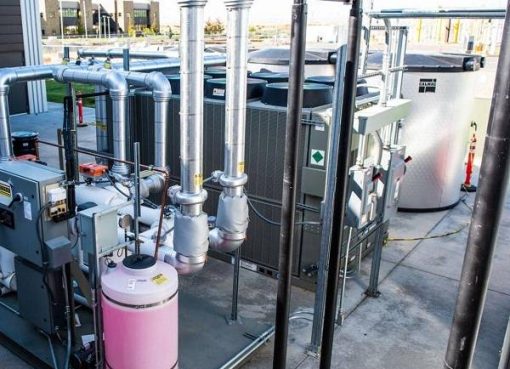In the rapidly evolving landscape of business and technology, optimizing computational efficiency is key to breaking new ground. At the International Conference for Machine Learning, researchers presented a paper exploring whether an algorithm called Ford-Fulkerson — which computes the maximum flow in a network — can work faster by using machine learning.
Large-scale software often requires several machines and hundreds of hours of computing power to solve industry problems. By combining machine learning with problem-solving techniques, computers can analyze and process data faster. Another bonus: companies can save energy because computers are working more efficiently and using less power.
“We often observe some phenomenon in practice related to the performance of an algorithm, and we don’t totally understand why it’s happening. One example is the usefulness of warm starts,” said Sami Davies, Ph.D., a post-doctoral researcher at Northwestern University. “If we can figure out why something is happening, then we can harness it and use it to our advantage.”
What is a “warm-start?” Imagine someone playing a video game for the first time; the player is unfamiliar with that game and the obstacles they are about to face. A gamer will use knowledge from similar games they have played in the past as they approach the new game. That advantage is like a “warm-start.”
Benjamin Moseley, Ph.D., Associate Professor from Carnegie Mellon University’s Tepper School of Business and a co-author of the study, notes that businesses have used warm-start algorithm design since the 1970s.
“We wanted to explore if machine learning can be coupled with traditional techniques to unlock performance improvements,” said Moseley. “In particular, we asked: Can predicted solutions be used as a starting point that results in software running faster?”
For this study, they evaluated image segmentation, a core problem when computers analyze an image to separate an object from the background. Image segmentation, for example, is used in self-driving cars to detect and recognize pedestrians and in medical imaging to identify tumors.
By using photographs of common things like people, animals, and objects, they tested their theory and found that image segmentation using warm-start resulted in faster image segmentation than cold-start.
“This paper offers a solution that can take advantage of good predictions and is robust to predictive errors,” said Moseley. “By building on the technology businesses have been using for decades, our findings show that this approach can improve computing speed while not sacrificing the accuracy or reliability of the algorithm’s predictions.”
Moseley points out that there are still some challenges to overcome, like figuring out what to do when the predictions are wrong. They also want to explore if other algorithms can benefit from similar techniques.
This research has given an example of a well-established approach that can be dramatically improved using the warm-start approach. The next step is to identify other cases where warm-start could improve performance. The team is exploring local search algorithms, which are a common approach used in artificial intelligence and machine learning applications.
Source: cmu










